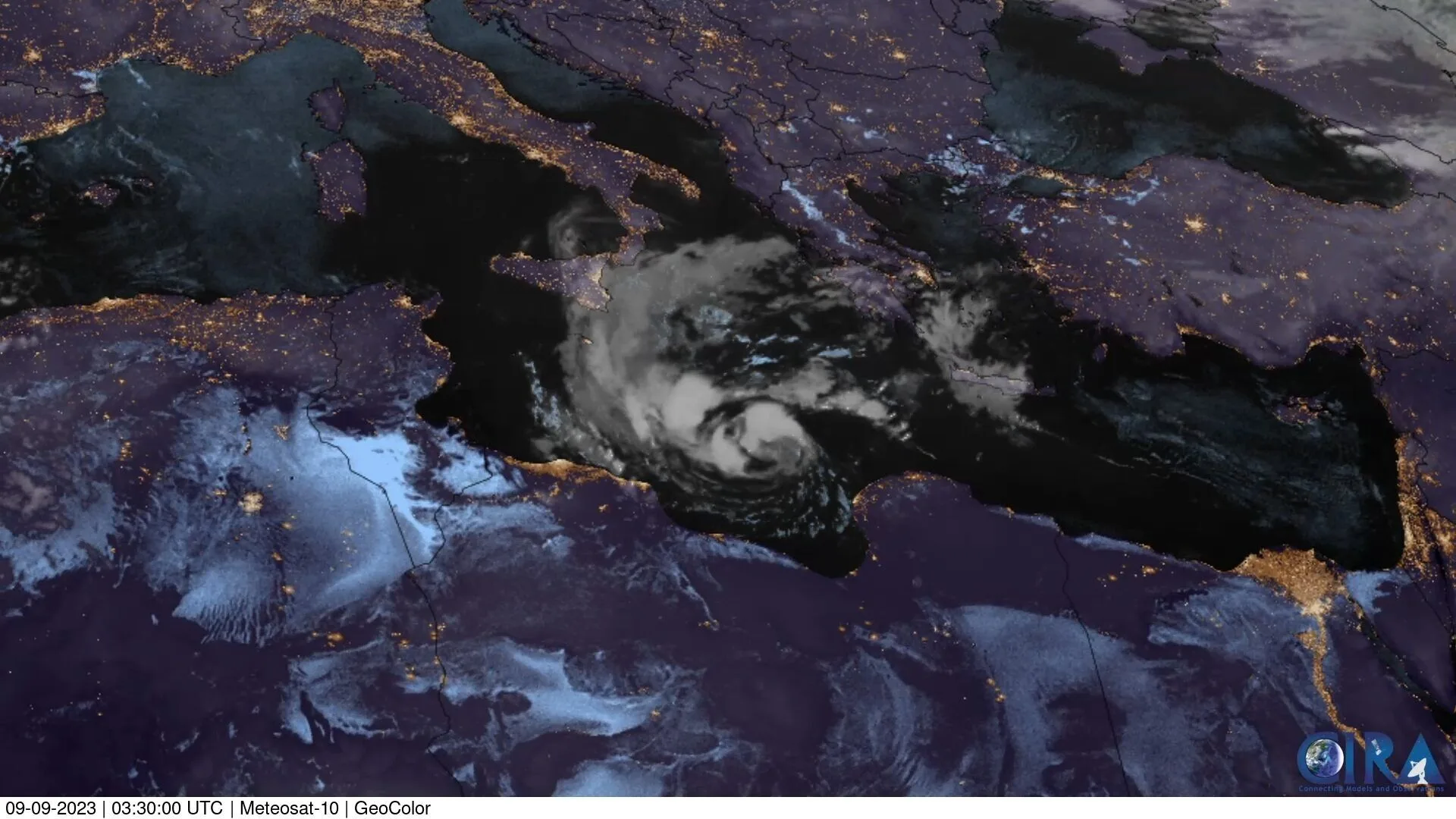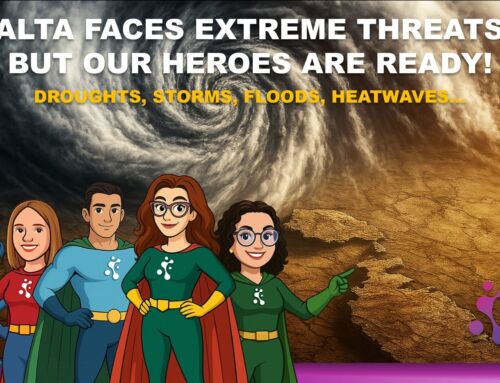In early September 2023, Storm Daniel emerged as a formidable and tragic demonstration of the Mediterranean’s growing vulnerability to extreme weather events fueled by climate change. Originating near Greece and later intensifying into a powerful Mediterranean cyclone, Daniel charted a destructive course that would profoundly affect multiple nations, skimming Malta and leaving a trail of devastation in Libya.
The Genesis and Meteorological Evolution of Storm Daniel
Storm Daniel’s formation was not merely a product of typical Mediterranean weather but a convergence of climatic factors that have become more common in recent years. A low-pressure system developed in early September, absorbing moisture from an unusually warm sea with surface temperatures above 27.5°C. This warmth provided the energy needed for Daniel to evolve into a subtropical cyclone. The resulting storm displayed powerful convection and was laden with moisture that would later unleash torrential rainfall.
From September 4 to 6th, Greece bore the brunt of Daniel’s early wrath, particularly in the region of Thessaly. Rainfall amounts exceeded 900 mm in some areas—more than the annual average—and swaths of land were submerged, impacting agriculture, infrastructure, and local economies. Over 875 square kilometres were flooded, devastating the livelihoods of thousands and creating challenges for Greece’s disaster response capabilities.
Skimming Malta: A Prelude to Greater Devastation
As Storm Daniel moved southeast, it passed near Malta, disrupting local weather and maritime activities. The island experienced heavy seas and powerful gusts, enough to halt port operations and affect naval travel. Cruise liners such as the MSC World Europa could not dock due to hazardous conditions, reflecting the storm’s broad impact on the Mediterranean’s interconnected systems.
While Malta was spared the storm’s core, the rough seas and strong winds exemplified the unpredictable nature of such weather systems. The disruptions served as a warning that even when not directly impacted, regions like Malta remain at risk from the secondary effects of powerful storms, highlighting the need for enhanced early warning systems and resilient infrastructure to manage these indirect impacts.
The Humanitarian Crisis in Libya: An Unprecedented Disaster
On September 10, Storm Daniel made landfall in Libya with devastating consequences. The coastal city of Derna was at the epicentre of the tragedy. Heavy rainfall combined with the collapse of two dams unleashed a torrent of water, creating a seven-meter-high wave that swept through the city, destroying buildings and sweeping residents into the sea. This disaster claimed over 11,000 lives, with thousands more missing or displaced, a stark reminder of the severe human toll extreme weather can exact when compounded by failing infrastructure.
The collapse of the Derna and Mansour dams underscored the peril of outdated or poorly maintained infrastructure in regions prone to extreme weather. Years of political instability and conflict left Libya ill-equipped to manage such a crisis. The lack of an effective flood warning system and the delayed implementation of emergency protocols turned an already grave situation into an unparalleled humanitarian catastrophe.
Regional Climate Implications and Calls for Action
The catastrophic journey of Storm Daniel illustrates how climate change can amplify the impacts of traditional weather systems. Warmer seas, more intense heatwaves preceding storms, and the rapid urbanisation of vulnerable regions have all contributed to more severe outcomes. This storm is a critical case study for climate scientists and policymakers, showcasing the urgent need for action.
Countries in the Mediterranean, with their mix of developed and developing regions, need to adopt a cohesive approach to climate resilience. Investments in predictive technologies, integrated watershed management, and robust emergency infrastructure are essential to safeguard against future disasters. Fostering international cooperation for real-time data sharing and response coordination can enhance preparedness across borders.
Lessons for the Future
Storm Daniel’s path through Greece, Malta, and Libya is a testament to the interconnected nature of climate impacts in the Mediterranean. It calls for renewed vigilance, improved infrastructure, and policy reforms prioritising resilience. For regions like Malta, which experienced a near-miss, the storm served as a reminder of the importance of readiness even when the most severe impacts are avoided.
The disaster in Libya further underscores the urgent need for effective climate adaptation strategies that integrate robust engineering solutions and community-based preparedness. The lessons from Daniel stress that climate change is not just a scientific or policy challenge but a human one, where the stakes include lives, homes, and entire communities.






